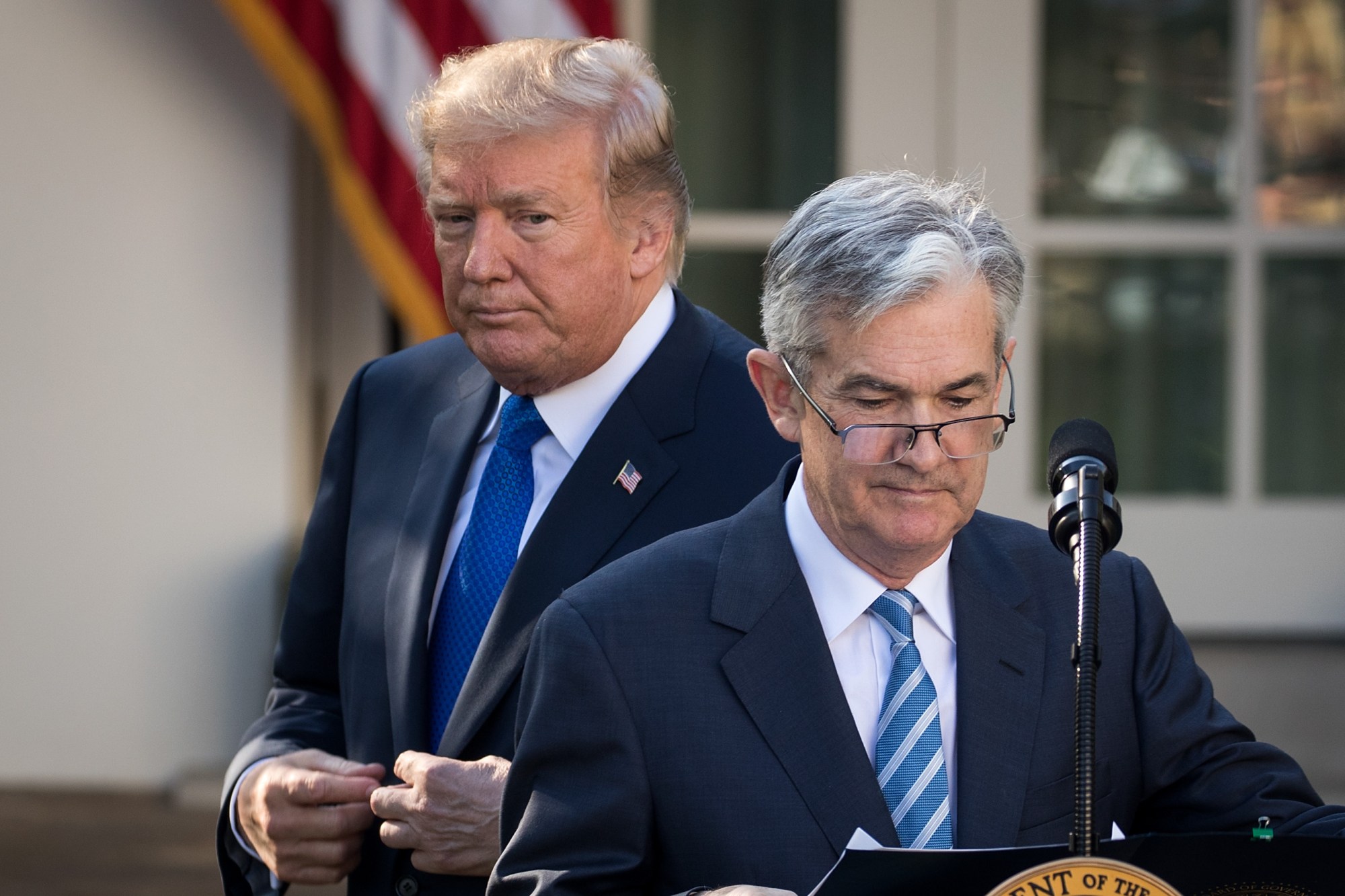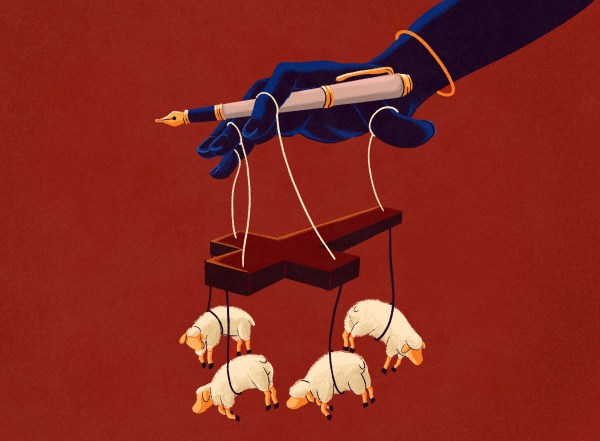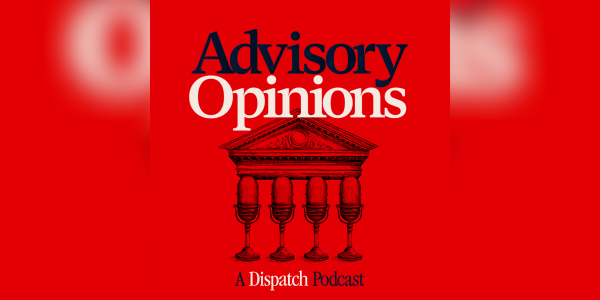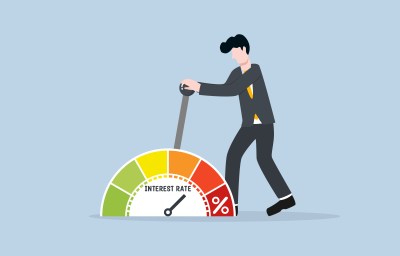A few years ago, Kate McKinnon had a pretty good skit on Saturday Night Live called “What Still Works?” in which she “interviewed” a parade of horribles—Marjorie Taylor Greene, a meme-stock investor, etc.—in a quest to figure out what, if anything, still works. At one point, she spoke with Jack Dorsey (played by Mikey Day), then the boss of what was then called Twitter:
Jack Dorsey: While we’re gathering opinions on what works, would you say that my chin-beard is working?
Kate McKinnon: It’s working in terms of keeping me a lesbian.
Good skit. Good question, too.
If I were designing the U.S. government from the ground up, my hard little libertarian heart would not have wanted to include many things we currently have, the Federal Deposit Insurance Corporation (FDIC) and the Federal Reserve among them. I opposed the bailouts of the financial sector in 2008 and still oppose similar programs.
But the question “What still works?” raises another important question—often the most important question: “Compared to what?” And one of the lessons of the 2008-09 financial crisis was that the FDIC and the Federal Reserve and lots of other similar institutions—imperfect though they may be and philosophically vexatious as their existence is—work pretty well. We could have done a lot worse in those years than we did, and we could have done a lot worse during and after the COVID-19 pandemic than we did. Our European cousins are not fools and miscreants, but they’ve struggled more with inflation than we have in recent years, thanks in part to their self-imposed vulnerability to energy shocks.
A couple of weeks ago, my friend David French caused a ruckus by writing the least surprising column he has written during his time at the New York Times, in which he stated that he intended to vote for Kamala Harris in order “to try to save conservatism.” While there were some thoughtful responses, for the most part, the right harrumphed as one, with critics demanding to know: What good thing, from a conservative point of view, could possibly come from a vote for Kamala Harris? If we set aside the fact that this election is unlikely to provide the Republican Party with what it really needs most—a humiliating 48-state landslide defeat, which is what it is going to take to sober up these miscreants—we might find the answer in a few boring things, including allowing the Fed to continue to be one of those things that work pretty well.
If by “conservative” you mean “ideologically rightist” or “doing things that bring power to politicians who belong to the Republican Party,” then you surely understand and endorse Donald Trump’s recent remarks (which he is, of course, already backing away from) that as president he should have more control over Fed policy because—and let’s go ahead and quote the dolt to get the full dose of intellectual rigor on display here—“I made a lot of money. I was very successful. And I think I have a better instinct than, in many cases, people that would be on the Federal Reserve, or the chairman.” So, there’s that.

If, on the other hand, you take “conservative” to mean … conservative … then Kamala Harris’ stated policy preference (offered here with the caveat that you have to check her positions every 20 minutes to see which of Trump’s she has taken up) is the more conservative option, i.e., the tried-and-true conservative policy of leaving well enough alone. “The Fed is an independent entity,” she said recently. “As president, I would never interfere in the decisions that the Fed makes.”
Who knows whether she means it. But whatever degree of sincerity we assign to her statement, Harris’ hands-off attitude toward the Fed’s independence is surely more conservative than Trump’s instinctive approach, which is: “Give me power over that thing because I want it and damn it I’m still rich from reality shows and scam colleges in spite of being an utterly incompetent real-estate investor!”
If you want to change things at the Fed—and, though I am inclined to leave well enough alone for the moment, there is much that needs reforming in the central bank—Trump’s instinct to politicize it and put it under presidential authority is precisely the wrong way to go. As Dominic Pino put it at National Review: “Independent monetary policy is better than politician-controlled monetary policy. Rules-based monetary policy is better than independent monetary policy.”
That is … probably right. If you want a more predictable monetary policy and a policymaking environment with less discretion in it, then a rules-based approach would be a big improvement. Of course, one would want to preserve some discretion in extremis, which raises the question of who has discretion about invoking that discretion, which puts us into a recursive loop that ends with reiterating our confession that man is a fallen creature, crooked timber out of which no straight monetary policy may be made, etc. But we don’t have to take it back that far.
What would a rules-based system look like? There are two main models for that.
One is adopting a “Taylor rule,” which has the reassuring quality of having some math in it. Not that the rule’s namesake, John B. Taylor, thinks that policymakers were going to break out the slide rules: “If there is anything about which modern macroeconomics is clear however—and on which there is substantial consensus—it is that policy rules have major advantages over discretion in improving economic performance,” he wrote in his noted 1993 paper on the subject. “Hence, it is important to preserve the concept of a policy rule even in an environment where it is practically impossible to follow mechanically the algebraic formulas economists write down to describe their preferred policy rules.” Taylor offers up some algebra and—bear in mind that he was writing in the early 1990s—observed: “What is perhaps surprising is that this rule fits the actual policy performance during the last few years remarkably well.” The fact that there is no rule saying that the Fed must follow a rule doesn’t mean that the Fed is, in fact, operating willy-nilly. Taylor rules (there are a few variations) focus on the difference between the desired inflation rate and the observed inflation rate, which has been the effective convention among competent modern central bankers for a long time. But there are challenges: You have to measure a lot of variables with a high degree of accuracy to follow a Taylor rule rigorously and effectively.
That is one big argument for the major alternative to a Taylor rule, which goes by the name “nominal GDP targeting,” a policy eloquently championed by Ramesh Ponnuru, among others. Nominal GDP targeting adjusts policy in response to a single variable: the overall level of spending in the economy. Nominal GDP can go up for two reasons: 1. because of economic growth; 2. because of inflation. (Likewise, it can decline because of economic contraction or deflation.) To simplify (a lot!), this model holds that whether nominal GDP is growing doesn’t really matter because of real economic expansion or because of inflation or—as almost always is the case—because of some mix of the two. If the economy is growing very quickly, then you want higher interest rates to keep it from growing so fast that it produces inflation; if it is growing because of inflation, then you want higher interest rates to drive that inflation down. As David Beckworth and Joshua R. Hendrickson of the Mercatus Center argued in a 2016 paper: “Unlike a Taylor rule, which requires knowledge of inflation, actual output, and potential output, a nominal GDP target requires knowledge only of overall spending.”
Whichever version of rules-based monetary policy tickles your philosophical fancy, the goals are the same: We want a monetary policy that encourages growth and all the good things that come from growth (employment, higher wages, wealthier families, etc.) while also ensuring a reasonable level of stability in prices. We want monetary authorities—whether they are made of flesh and blood and pinstripes or mostly made of algebra—that achieve this in a way that is predictable, because we have enough drama and chaos in our public life as it is. Not much of that argues for giving more monetary-policy power to the president, and none of it argues for giving any monetary-policy power to Donald Trump.
Marcus Aurelius advises leaders against worrying too much what future generations will say about them. (He is known to readers as a Stoic philosopher, but bear in mind that his day job was emperor.) Look around you! he wrote. (I am paraphrasing.) You don’t place much value on the good opinion of the men of your own generation, and what makes you think that the judgment of future generations will be any more worth caring about? I do not think very much of Donald Trump—in case you hadn’t noticed—but I do not think that future presidents are any less likely to be dim, fickle, mercurial, cowardly, or enslaved by their passions. For that reason, if for no other, the prospect of giving presidents or other elected officers more power over monetary policy rather than leaving that power invested in an independent central bank seems to me a terrible idea. There is a lot of talk just now about “threats to democracy,” and I share some of those concerns, but there are places where we need less democracy, too, and monetary policy is one of them.
If it should come to pass that the discretion of our central bankers ends up costing us more than it is worth, then we have a few options for imposing rules-based constraints on them. Some critics argue that we have already reached that point, and some of them make a pretty good case. But I am not yet convinced of the wisdom of destabilizing things today in a quest for greater stability tomorrow. If Kamala Harris really wants to leave well enough alone and let the Fed do its job, then she has stumbled onto the right policy, which also happens to be the conservative one.







Please note that we at The Dispatch hold ourselves, our work, and our commenters to a higher standard than other places on the internet. We welcome comments that foster genuine debate or discussion—including comments critical of us or our work—but responses that include ad hominem attacks on fellow Dispatch members or are intended to stoke fear and anger may be moderated.
With your membership, you only have the ability to comment on The Morning Dispatch articles. Consider upgrading to join the conversation everywhere.